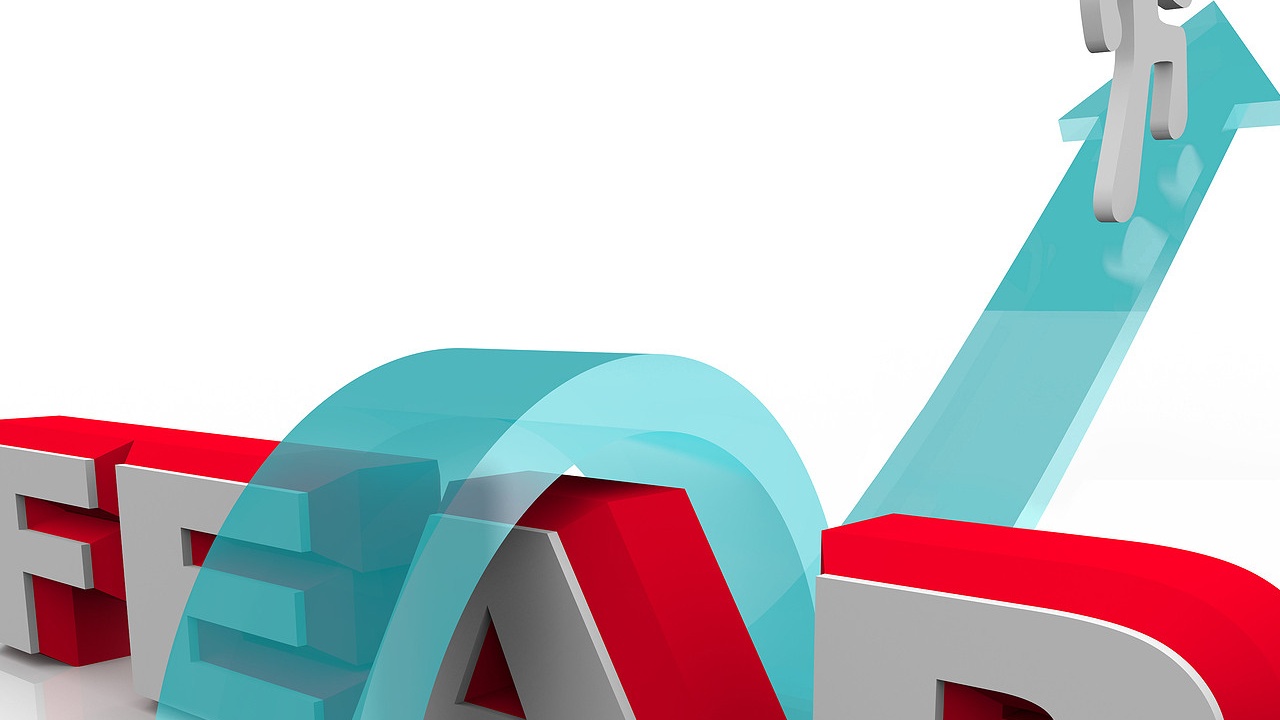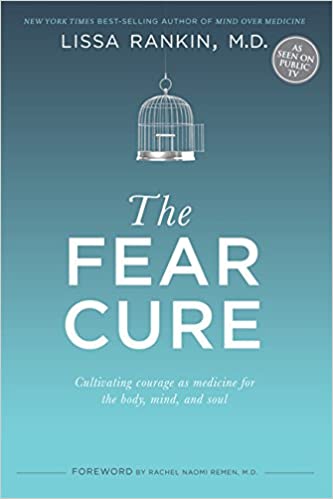Overcome Fear to Reduce Stress and Heal
Oct 27, 2015
Fear is a risk factor for disease and pain.
Fear raises your stress.
Stress reduces your ability to heal.
Recall my previous blog, Stress Prevents Self-Healing, where I reviewed the book Mind Over Medicine by Dr. Lissa Rankin, M.D. In her book, Dr. Rankin details how stress combined with an inability to relax is ruining our health. She explains how high levels of circulating stress hormones are linked to back pain, dizziness, insomnia, headaches, weight gain and more. In her new book, The Fear Cure, she delves deeper to reveal that fear is what underlies stress. Therefore, we need to resolve our fear so that we can regain wellness.
 What are we afraid of? Dr. Rankin explains that there are two kinds of fear: true fear and false fear. True fear is what you experience in a life-threatening situation, such as when the oxygen masks deploy on an airplane (which I’ve unfortunately experienced!). False fear, on the other hand, is created in your mind when you worry and become anxious about the bad things that may happen in the future. What if . . . it rains on your outdoor BBQ? What if . . . the movie is sold out? Dr. Rankin has identified four fearful assumptions that she believes are the basis of our false fears.
What are we afraid of? Dr. Rankin explains that there are two kinds of fear: true fear and false fear. True fear is what you experience in a life-threatening situation, such as when the oxygen masks deploy on an airplane (which I’ve unfortunately experienced!). False fear, on the other hand, is created in your mind when you worry and become anxious about the bad things that may happen in the future. What if . . . it rains on your outdoor BBQ? What if . . . the movie is sold out? Dr. Rankin has identified four fearful assumptions that she believes are the basis of our false fears.
The Four Fearful Assumptions
- Uncertainty is unsafe.
- I can’t handle losing what I cherish.
- It’s a dangerous world.
- I am all alone.
Can you relate to any of these statements? I can. Previously believing the first assumption--Uncertainty is unsafe--I had a hard time with change and was unwilling to take a risk and quit my secure job. I liked the predictability of a regular paycheck, even though the job was unsatisfying and I was working in a toxic environment where I was miserable. This fearful assumption--Uncertainty is unsafe--kept me stuck.
These four fearful assumptions are thoughts you have accepted as truths and now believe. You can equate the four fearful assumptions to four limiting beliefs. And limiting beliefs create false fears. In Dr. Rankin’s words,“You may not realize that most of your false fear stems from limiting beliefs you hold as truth. You may not even recognize that you carry these beliefs with you as baggage, because you’ve accepted them as such truth that you don’t even question them.”
Understanding Subconscious Beliefs
Beliefs direct your actions. However, you are generally not aware of these beliefs because they reside in the subconscious mind. Lisa Smole, certified hypnotherapist and Neuro-Linguistic Programming (NLP) practitioner, explains that there is a mental program running below your conscious level of awareness that influences your choices, behaviors, emotions and overall personality. This subconscious program is strong, deeply ingrained, and will override conscious will or volition. That's because the subconscious mind is designed to keep you safe. To explain, Lisa gives a great example that shows the interplay of the conscious and subconscious minds. It also demonstrates fearful assumption 3: It's a dangerous world.
Let’s say that a person wants to lose weight so that they feel better and receive more love, but subconsciously ice cream/sweets are linked to comfort and/or safety and assuage stress. These links are often established in childhood, such as when parents give children sweets as a reward for good behavior or to get them to stop crying, or when sweets are taken away as a punishment, etc. The general rule (Psychological Law of Dominant Effect) is that the strongest emotional urge (emotions are driven by the subconscious mind) will override conscious choice. In this scenario, the conscious choice to lose weight is superseded by the stronger emotional need, and so the person will continue to eat ice cream/sweets until the underlying emotional need is addressed. Both the conscious and subconscious minds have good and similar intentions: both want the person to feel better and safe.
Using Fear to Heal
In The Fear Cure, Dr. Rankin asserts that fear can help us heal when we transform our four fearful assumptions into four courage-cultivating truths.
The Four Courage-Cultivating Truths
- Uncertainty is the gateway to possibility.
- Loss is natural and can lead to growth.
- It’s a purposeful universe.
- We are all One.
In my earlier example, when I release the fearful assumption--Uncertainty is unsafe--and accept the courage-cultivating truth--Uncertainty is the gateway to possibility--I am able to move forward with ease and leave my job. Actually, this courage-cultivating truth has absolutely been my reality. Now it's your turn. Can you identify anywhere in your life where you would benefit by transitioning from a fearful assumption to a courage-cultivating truth?
Additionally, Dr. Rankin explains how moving from the fearful assumptions to accepting these courage-cultivating truths help us heal. “Our nervous system calms down when we can come into right relationship with uncertainty, make peace with loss, trust that we live in a purposeful universe, and remember that we are never alone.” In other words, when we reduce our fear, we reduce our stress (calm the nervous system), and our body can heal itself.
Transitioning your beliefs is a process that takes time. To do this, Dr. Rankin outlines six steps in her book for changing beliefs.
Dr. Rankin’s Six Steps to Cultivating Courage
First: Believe. Replace fear-inducing beliefs with courage-enhancing trust.
Second: Support. Seek out support from people around you--offer your support to others.
Third: Intuition. Learn to trust your intuition in order to discern true fear from false fear.
Fourth: Diagnose. Identify what lies at the root of your false fear.
Fifth: Prescribe. Write the Prescription for Courage for yourself.
Finally: Surrender. Release attachment to outcomes and accept what is.
If you find this interesting, I encourage you to read about all six steps in her book. In my next blog, I am going to focus on the first step: “Believe. Replace fear-inducing beliefs with courage-enhancing trust.” Next time I will give you examples of several techniques to transform your fearful assumptions into courage-cultivating truths.
You can heal yourself by reducing your stress, which starts with overcoming your fear.
Special thanks to Lisa Smole, at Align Within, for her valuable input on this blog.
As a certified medical support hypnotherapist and NLP practitioner, Lisa Smole is a change agent for people with a broad range of goals and issues. She is located in Portland, OR and works with people worldwide via Skype. Lisa continues to progress her passion for continual growth and personal development and empowering others.
Stay connected with news and updates!
Join our mailing list to receive the latest news and updates from me.
Don't worry, your information will not be shared.
We hate SPAM. We will never sell your information, for any reason.

